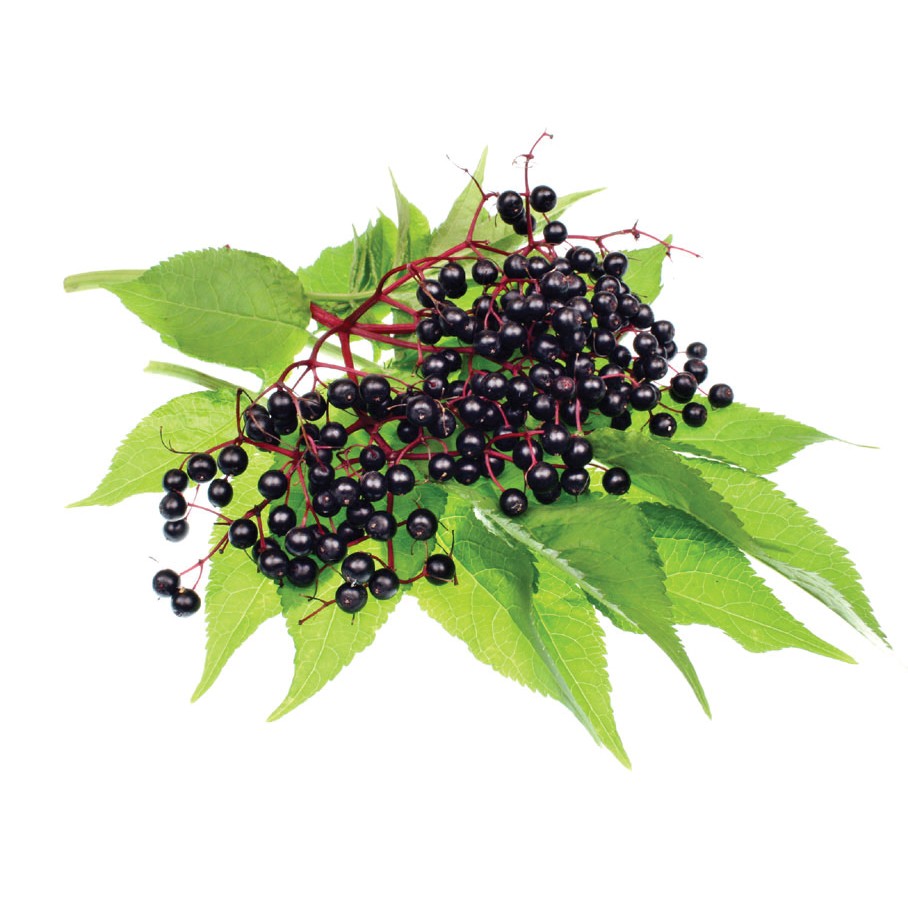Black Elderberry
Sambucus nigra L. – Adoxaceae

Elderberry is a shrub or low tree. The bark is cracked, gray in color, on young branches it is green with prominent large, egg-shaped buds. The leaves are oddly pinnate, the flowers are white-yellow, fragrant, collected in dense inflorescences. The fruit is a drupe, red-purple in color, containing 3 seeds. Elderberry grows in bright and warm places and is quite widespread in our region.
Black elderberry (Sambucus nigra) is, according to many myths, a magical plant. Because of its healing properties, it was used in ancient Egypt and ancient Greece, and Hippocrates, the father of medicine, called this plant the ark of health.
Black elderberry contains carotene, vitamins B and C, and is also rich in minerals: iron, sodium and calcium. Also, the fruit of black elderberry contains anthocyanins (sambucin, sambucianin, chrysanthemum), tannins, phytosterols, mucus and amino acids. It also contains organic pigments, chlorogenic acid, and is rich in flavonoid heterosides (rutin, isoquercitrin, hyperoside), which are great antioxidants. The active substance sambucol activates the immune system by producing cytokines and reduces the duration of the flu by 3-4 days. There are traces of essential oil and it is dominated by fatty acids.

Due to its antioxidant (neutralizes free radicals in the body) and immunomodulatory action (stimulates the immune system), it is recommended for the prevention and treatment of upper respiratory tract infections. This plant is considered a natural antiviral, especially against different strains of the flu virus. It has been proven, in vitro research, that black elderberry is effective against even 10 strains of the flu virus. Also, many studies have shown that elderberry can be useful for the activation of the immune response (activation of inflammatory cytokines) in completely healthy people, but also in people suffering from some diseases, such as various forms of cancer and AIDS. Black elderberry can be recommended in patients suffering from diabetes to strengthen the immune system. Polyphenols extracted from the fruit of this plant modify the immune response in people suffering from diabetes and reduce the possibility of inflammatory reactions.
References
- Black elderberry (Sambucus nigra) supplementation effectively treats upper respiratory symptoms: A meta-analysis of randomized, controlled clinical trials
- Effects of Sambucus nigra and Aronia melanocarpa extracts on immune system disorders within diabetes mellitus
- The effect of Sambucol, a black elderberry-based, natural product, on the production of human cytokines: I. Inflammatory cytokines
- The effects of Sambucus nigra berry on acute respiratory viral infections: A rapid review of clinical studies
